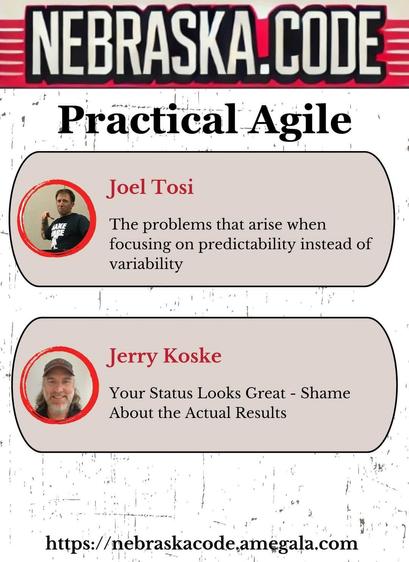Hi all, in my latest article I emphasize the importance of #adaptability in modern businesses. I discuss and outline outlines strategies for fostering an adaptive mindset, including aligning personal and team goals, promoting autonomy, utilizing technology, and encouraging lifelong learning. Effective #teamwork relies on clear communication, #empowerment, & #collaboration, all leading to successful #agileprojectmanagement and #leadership.

Mastering Adaptability in Agile Teams
Being AdaptiveHow to be AdaptiveCreate conditions to thriveSet up conditions for being adaptiveTools To Be AdaptiveBeing Adaptive Together as a TeamFramework for successSome strategic questions you should ask yourselfSkills and StrategiesLifelong LearnersTeam EmpowermentPutting It All TogetherAdaptive Project Management TechniquesAdaptive LeadershipConclusion An important result of an Agile mindset is being adaptable.Today's businesses must change how they run. It's not enough to just launch great products, especially in a crowded market. There are dozens of other competitors fighting to get customers' attention. These days, we need a new set of guidelines to help teams manage change. The key is being adaptive, and that starts with you! Being Adaptive To know what the new way looks like, let’s explore what the old ways were. Promoting people who are good at their jobs to management and just giving them ‘enough’ training. Thrive on status in a steady market position. And so on. With ever-changing market conditions, the only certainty is change. And that is where being adaptive is your super-power. Old ways of working were more command and control How to be Adaptive This is where you can learn a superpower. To me, the biggest superpower in agile — outside of an agile mindset — is adaptability. Here are some focus points on how to start thinking about being adaptive. Know yourself — Like I said before, it starts with you. Align with your company’s strategy. Focus on the value you can add to the work you do. Next, focus on supporting your team. Add value each and every day. Then focus on adding value to your company — often brainstorming ways to get alignment can be key. The trick is to start somewhere and measure your success so you can improve along the way. Focus on solving problems and generating results. All about the value you add! Work like an agile delivery professional. Organize your work around projects and deliverables, by breaking items down into its smallest chunks. Think: Minimal Viable Product (MVP). These steps will help you as a manager. They will also help you as a team-player. You will be more prepared to adapt when problems arise. Create conditions to thrive Here are some considerations when transitioning into an adaptive and agile mindset. Uncertainty prevails. Time is no longer a luxury. Create an environment for managers to be successful for constant change. Set up conditions for being adaptive To sum things up, consider the next and you’ll be on your way. Alignment: Get a clear organization strategy. Focus on yourself, then your team and then ultimately your organization. Promote autonomy when making decisions. Think self-managing teams, making decisions together as a team is empowering and rewarding. Use technology tools to support communication, collaboration and learning. Partnership with all. Working together is far more rewarding and liberating that being a silo. Think three amigos, the three musketeers. The smartest person in the room is no smarter than the collective team. Tip: Using the principles discussed, anything is possible when working together. That is what makes Agile so special! Tools To Be Adaptive In this section, we will look at how to be adaptive together as a team. We will explore some frameworks for success. We will also review skills and strategies to continue to be sustainable and thrive. Being Adaptive Together as a Team There are four basic components for us to focus on being adaptive and getting alignment when working as a team: Problems Results Skills Tasks These are four basic components of a successful workmate. Think: We have a problem to solve. We need to get workers to finish tasks. They should use their skills to achieve results that solve problems. Framework for success Now that we have explored effective techniques to be adaptive as a team. This section walks through what the framework for ongoing success looks like. It is all about getting alignment. Some strategic questions you should ask yourself What are the strategic goals of the organization? What are the strategic goals of your group connected to your organization? What are your personal goals connected to the group and organization strategic goals? Organizations need strategy and alignment processes that never end. Ask yourself… Is your strategic goal crystal clear? What does success look like? Is it actionable? Will it resonate with all? Think both organizations and team goals Then think about individual goals. Skills and Strategies Here are some topics that you and your team should consider when working together. Tip: The aim is to give optimal collaboration at all points, all while having fun. That is the most important factor for team building. Lifelong Learners The rules for employees are changing. When you think about disruptive change — you need to be prepared for it. So, how do you plan for this? Offer your team a range of learning opportunities. This will give interesting opportunities to up-skill, share, and do something new. You need to make sure learning is as easy as possible. Help your team embrace the principles of not only lifelong learning but also lifelong teaching. It is a step ahead to success. Think of a growth mindset. An Agile Mindset is a growth mindset. Encourage all your leaders to dream. When they show more interest, they are more likely to have a growth mindset. Real-world example: Google encourages its employees to dedicate 20% of their time to projects outside their primary job functions. This policy has led to the development of successful products like Gmail and Google News. Team Empowerment For team empowerment, a leader needs to encourage teams to be collaborative. Your team members need to have the courage to take risks. They should feel safe failing. To do this, you need to be an enabler. Create an environment for your team to bring ideas to the table, that can move the team forward. Great leadership is all about enabling your team the freedom to make decisions. Real-world example: Netflix allows its employees to make decisions. They assume that employees always act in the company's best interest. This trust-based model has resulted in high innovation and low turnover rates. Some tips can include: Have team agreements, your team should have some agreements in place or guidelines and entrust they follow them. Trust team so they have the courage to experiment, fail and adapt to move on. Coach your team to be independent leaders. Set them up for success in the digital transformation. Putting It All Together How to be adaptive as a team and execute for ongoing success! Adaptive Project Management Techniques With many organizations adopting hi-tech company techniques, it pays to do the same. But how? Follow these tips: Applying an Agile mindset to your work. Break work down into manageable chunks with short-term deliverables and rapid-cycle learning. Think like Adaptive Project Managers. Think about what success looks like (the result), how can you measure that? The clearer the measurable, the clearer the deliverables. Break work into specific milestones and deliverables, i.e., Agile and Scrum frameworks. Communicate new information and update your projects, this includes future goals and metrics. If they change, update them. Allow your team to focus on the details. Remind them of the ultimate goals of initiatives and focus on outcomes, results, and not the process. Adaptive Leadership Adaptive leadership is great! Imagine a world without managers. In today’s business world, we do not have managers—they are a tax on innovation. Instead, we have leaders. Ask your team to self-manage. Rethink the organization’s communication process. Involve teams in setting priorities. Ask how might they implement it? Few people thrive as traditional managers, so be an adaptive leader instead. Reflection: How do you now empower your team to make decisions? What changes can you implement to adopt a more agile approach? Conclusion Remember that your team is full of smart people. They should be empowered, have clearly defined roles and responsibilities with enough resources available to do the work. https://www.amazon.com/Learn-Agile-Scrum-Hours-Beginners-ebook/dp/B0F1G76BPY/







